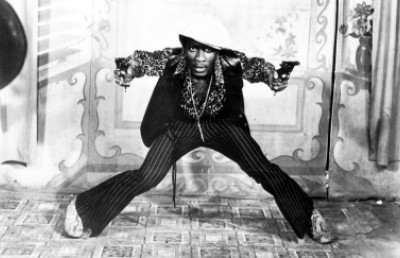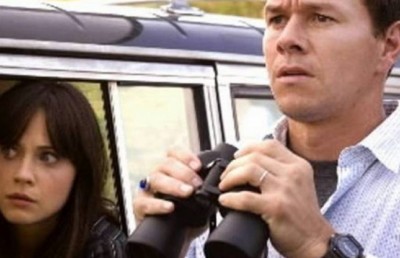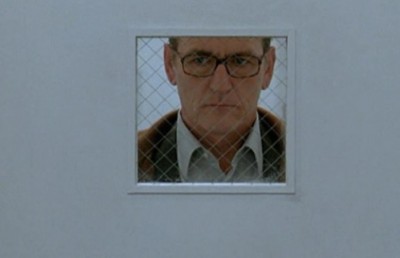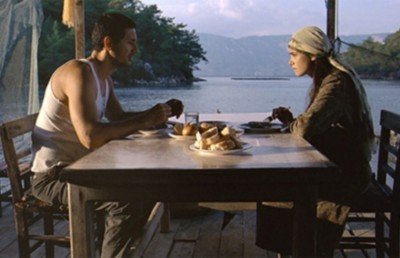Audiovisual Glass: Eisenstein and Frank Lloyd Wright on Light, Space and Music
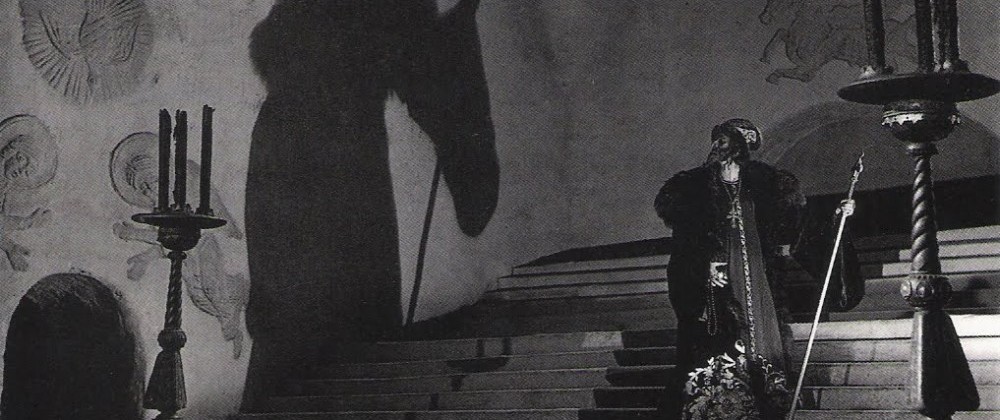
Frank Lloyd Wright, in his Autobiography, selected five new resources which he considered central to his approach to what he called ‘organic architecture.’ One of these resources was glass. In this comparative study of Eisenstein’s and Wright’s views on glass there are some intriguing audiovisual inter-reflections. Eisenstein was planning to propose The Glass House as his first sound film project for Paramount, on his way to Hollywood in 1930. The Glass House was to be about living in a new type of dwelling, a glass tower, like the skyscraper Wright designed for the Bowery district in Manhattan. Eisenstein read about Wright’s project in the New York Times magazine, dated the 29th June 1930, before he went to Hollywood. He cut out the picture of Wright’s design for the glass skyscraper and put it into his scrapbook.
Glass
If the ancient Greeks had had access to the new possibilities of glass in architecture, Wright believed that this new technique would have ‘abolished the ancient architecture we know, and completely.’ For Wright, glass, the second of his five new resources, represented not just a new technology, but a new and positive departure for civilization; its intelligent use would produce new types of construction resulting in new ways of life. The model of the cave as a human dwelling, a cave with holes for windows would completely disappear. Glass would enable walls to vanish, there would be no more windows, glass would simply become what were previously walls. [1] The transparency of glass would open up our living and working spaces: corners would be ‘dissolved in glass’2 and it would provide an active reconnection for people with the surrounding garden and sky. More universally, Wright believed that the new use of glass would enable space to ‘go out or come in where life is being lived, space as a component of it.’ He affirmed that a ‘sense of space…or feeling for architecture’ would become ‘an implement to characterize the freedom of the individual.’ The disappearance of the wall and its replacement by glass would liberate the formerly restricted dwelling space, and at the same time liberate the individual with a sense of unrestricted movement. The open and fluid spaces in Wright’s buildings would express and encourage in the individual a sense of freedom. [3]
Eisenstein’s approach to the use of new glass technology was more equivocal. He had two approaches for his Prologue to The Glass House. In one plan he intended a ‘history of glass from ancient times through foolish use of glass.’ In another approach he planned a more abstract ‘symphony in glass (non-objective).’ This would involve all possible forms of glass, ending with the Glass House: ‘all forms. Glass hair and threads reach out. Surfaces, edges, objects, a glass automobile (saw in some magazine), house.’4 Though Wright’s idealistic and individualistic vision of building with glass is in total contrast to Eisenstein’s image of the Glass Tower as a psychological prison in glass, Wright nevertheless was aware that light, like space, had to be articulated in order to be used effectively. He acknowledged that there was ‘the danger of taking light too far and leaving the inmate defenceless in a glass cage.’5 To avoid this situation, he suggested that light could be controlled and reduced ‘within the rooms by screens, blinds, or insertion of translucent or opaque glass.’6
Wright would also consider the orientation of the houses he designed and he would use clerestory windows to bring in a beam of sunlight which would move across the room. The articulation of light in both space and time was also something which preoccupied Eisenstein. He noticed this phenomenon in Chartres cathedral, in its 13th century stained glass. Unlike the 16th century stained glass in the cathedral, he had found the more ancient windows difficult to decipher, in terms of what they were depicting. It was only on a later visit that he noticed that the subject and scene were not the main reason for the arrangement of the coloured glass in the window: ‘…the sheaf of sun rays passing through the field of coloured pieces of glass…suddenly undergoes the principle of optical blending of separate rays cleverly arranged, suddenly merging into the unity of a single ‘immaterial’ decorated gold column sparkling with gold and white…Thus the multicoloured spectrum of stained-glass windows merges in a gold unity.’ Eisenstein, like Wright, was inspired by the spatio-temporal articulation of light in buildings.
Also like Wright, Eisenstein related the edifice organically to the surrounding nature: ‘The spectrum of the stained-glass windows in turn appears to be a synthesis of the whole colored diversity of what surrounds a Gothic cathedral…the whole coloured diversity of coloured richness of eternally changing nature surrounding it, added to the group of pure, glittering tones.’ The time element in the changing character of what is both outside and inside the cathedral continues to prompt musical equivalents in Eisenstein’s mind. He describes ‘the slow, progressive overflow of the coloured symphony through the body of the cathedral’ and how ‘the sunlight penetrating around the church forces window after window to blaze in succession.’ For Eisenstein, the articulation of light in time and space functions like a musical composition. He describes ‘the coloured radiation –with artfully rhythmic and musically calculated interruption of darkness and with a melodic calculation of the change of one tonality for another, as the rays pass the artfully composed shift of these transparent screens of glass.’ Here Eisenstein further extends the idea of a musical composition of light to produce a means of attaining audiovisual unity in a sound film: ‘in merging the coloured element with the audial element –in removing the opposition between the areas of hearing and vision– both he (i.e. the director) and his viewer will find the most inspired images of audiovisual exaltation as the best means capable of instilling into the viewer’s consciousness and feeling that magnificent system of ideas that alone is able to engender a similar, truly effective symphony.’7 Wright was similarly inspired when he described the play of light from gem stones, and, like Eisenstein, these radiating colours evoked for him a system of ideas which produced the sense of a simultaneous musical and mathematical calculation:
the gleam of mineral colours and flashing facets of crystals. Gems to be sought and set; to forever play with light to man’s delight, in never-ending beams of purest green, or red or blue or yellow, and all that lives between. Light! Living in the mathematics of form to match with the mathematics of sound.’ [8]
Wright extended the idea of the play of coloured light in space to the design of a whole city, comprising gigantic expansions of the principle of the stained glass window, again evoking a musical, mathematical form:
Imagine a city iridescent by day, luminous by night, imperishable! Buildings, shimmering fabrics, woven of rich glass; glass all clear or part opaque and part clear, patterned in color or stamped to harmonize with the metal tracery that is to hold all together, the metal tracery to be, in itself, a thing of delicate beauty consistent with slender steel construction, expressing the nature of that construction in the mathematics of structure, which are the mathematics of music as well.’9
Wright’s pleasure in the structured use of coloured light also prompted him to design his own stained glass abstractions for his prairie houses, and the new technique of electro-glazing enabled these designs to be realised more easily than before:
I used to love to sit down at the drawing board with a T square and triangle and concoct these patterns that you will see in the windows. I evolved a whole language of my own in connection with those things. That was long before the Mondrians and these other things ever happened. You will see nearly everything that they ever thought of in these glass patterns.’10
Wright’s mention of the evolution of his own language of design derived from the strong influence on him as a young man of a chapter about the history of architecture by Victor Hugo, from his novel Notre-Dame de Paris (1831). In his Autobiography Wright described this essay as being ‘one of the truly great things ever written on architecture.’11 Hugo’s main premise was that before Gutenberg and his invention of the printing press,
during the world’s first six thousand years, from the most immemorial Hindustan pagoda to the cathedral of Cologne, architecture was the great script of the human race. And so true is this, that not only every religious symbol but also every human thought has its own page and its own monument in this immense book…Thus, up until Gutenberg, architecture was the chief, the universal form of writing. It was the Middle Ages which wrote the final page in the book of granite, which had been begun in the Orient and carried on by Ancient Greece and Rome.’12
For Hugo, buildings during this vast period were not just books, but were a record of human thought. ‘Masonry being its one way of manifesting itself, thought hastened to it from every side…all ideas of any complexity which arose in the world became a building.’13 One of Wright’s definitions of architecture was that ‘architecture is the scientific art of making structure express ideas.’14 Wright believed that what he called ‘thought-built’ architecture (as opposed to ‘taste-built architecture) was one of the central requirements for organic architecture, most other types of construction he termed ‘inorganic…un-thought-out academic building.’15
Another important aspect of Hugo’s influence on Wright relates to the importance of the site in the significance of a building: ‘not only the form of buildings but also the site chosen for them revealed the idea which they represented…Greece would crown her mountains with a temple harmonious to the eye.’16 Hugo’s concept is one of the origins of Wright’s organic procedure of designing a building to grow out of its site in a design which reveals both the idea underlying its structure and the structure of its context. When Eisenstein described his ‘ancient Greek film’ of the Acropolis, which deals in detail with the spatial relationship of construction to site, he refers to the same chapter by Hugo: ‘Victor Hugo called the medieval cathedrals “books in stone.”’17
As a dramatist and an admirer of opera, Hugo was also aware of the significance of the total theatre experience provided by the architects of the Gothic cathedrals. He believed that architecture’s ‘Iliads took the form of cathedrals. The other arts all submitted to the allegiance and discipline of architecture. They were the workmen in the great work. In his own person, the architect, the poet and overseer, summated the sculpture that carved his facades, the painting that illuminated his stained-glass and the music which set his bells swinging and breathed air into his organs.’18 Eisenstein’s experience of Gothic cathedrals in France described them in similar terms, but in his case he used these ideas to inspire him with possible ways of making effective audiovisual films:
It is a curious fact that the rudiments of an audiovisual performance are to be found in the celebration of the liturgy in the medieval church: in its forms it is a combination of singing, of action, of the play of light and colour from stained-glass windows, of the mighty sounds of an organ, of passages from the holy scriptures, either read aloud or acted out as scenes, and accompanied by the aroma of incense – taken together, this undoubtedly possesses all the characteristics of a multi-media performance.’19
Though this text was written in 1937, many aspects of Eisenstein’s description bring to mind his mise-en-scène for Ivan’s coronation in Ivan the Terrible and the later church scene involving the mummery of the Fiery Furnace.
As was mentioned above, one of the key influences of Hugo on Wright was the concept of ‘thought-built’ architecture. Eisenstein similarly derived the idea that like architecture, film (and in particular audiovisual film) represents a construct of thought. His approach to The Glass House film project, the project to make a film version of James Joyce’s Ulysses, as well as his idea to film Karl Marx’s Das Kapital were not only examples of the use of film as a realisation of a type of thought, but also, more dynamically, as a form of thinking. At his talk at the Sorbonne in 1930, Eisenstein explained to the audience his ideas behind his project to make a version of Das Kapital in film, in a form he called the ‘intellectual film’:
the intellectual film is the only thing capable of overcoming the discord between the speech of logic and the speech of imagery…intellectual cinematography will not be the cinematography of episodes, not the cinematography of anecdotes. The intellectual kino will be the cinematography of concepts. It will be the direct expression of entire ideological systems and systems of concepts…I will attempt to film Capital so that the humble worker or peasant can understand it in the dialectical manner.’20
Victor Hugo, in his meditation on the history of architecture, described the function and the popular impact of certain buildings in very similar terms to the way Eisenstein decades later described his aims in his project to film Das Kapital. Hugo described the late Gothic cathedrals as ‘buildings accessible to every soul, every intelligence, every imagination, still symbolic yet as easily understood as nature.’21 For Hugo the cathedral as an expression of a system of ideas was superseded by the book. For Eisenstein the cathedral was superseded by the film, in particular the audiovisual film. Though he was not able to film Das Kapital, he used what he had learnt from Hugo and from the Gothic cathedral in the opening scene of Ivan the Terrible, with its bells, its choral music, its stately processional under the light streaming down from the lofty cathedral windows.
Endnotes
1 Frank Lloyd Wright, An Autobiography (London: Faber & Faber, 1945), 298, 299, 300.
2 Peter Blake, Frank Lloyd Wright: Architecture and Space (Harmondsworth: Penguin Books Ltd., 1963), 38.
3 Frank Lloyd Wright, An American Architecture, ed. Edgar Kaufmann (New York: Horizon Press, 1955), 78.
4 Jay Leyda and Zina Voynow, eds., Eisenstein at Work (London: Methuen London Ltd., 1985), 36, 43.
5 Frank Lloyd Wright, An American Architecture, 101.
fn 6. An American Architecture, 256.
fn 7. S.M. Eisenstein, Nonindifferent Nature, trans. Herbert Marshall (Cambridge: Cambridge University Press, 1987), 107, 108, 109.
8 An American Architecture, 96.
fn 9. An American Architecture, 255.
10 Bruce Brooks Pfeiffer, Frank Lloyd Wright: Master Builder (London: Thames and Hudson, 1997), 38.
11 An Autobiography, Frank Lloyd Wright, 72, 73.
12 Victor Hugo, Notre-Dame of Paris, trans. John Sturrock (London: Penguin Books Ltd., 1978), 191.
13 Victor Hugo, Notre-Dame of Paris, 191, 193, 194, 195.
14 An American Architecture, 44.
15 Frank Lloyd Wright, An Organic Architecture: the Architecture of Democracy (London: Lund Humphries Publishers Limited, 1970), 7.
16 S.M. Eisenstein, Nonindifferent Nature, 191.
17 Notre-Dame of Paris, 193, 194.
S.M. Eisenstein, Towards a Theory of Montage. Vol.2. Selected Works. Michael Glenny and Richard Taylor, eds., Michael Glenny, trans. (London: BFI Publishing, 1991. Revised ed., 1994), 60.
18 Notre-Dame of Paris, 193, 194.
19 S.M. Eisenstein, Towards a Theory of Montage, 276n, 277n.
20 Marie Seton, Sergei. M. Eisenstein: A Biography (New York : A.A. Wyn, Inc., 1952), 153.
21 _Notre-Dame of Paris, 195.


